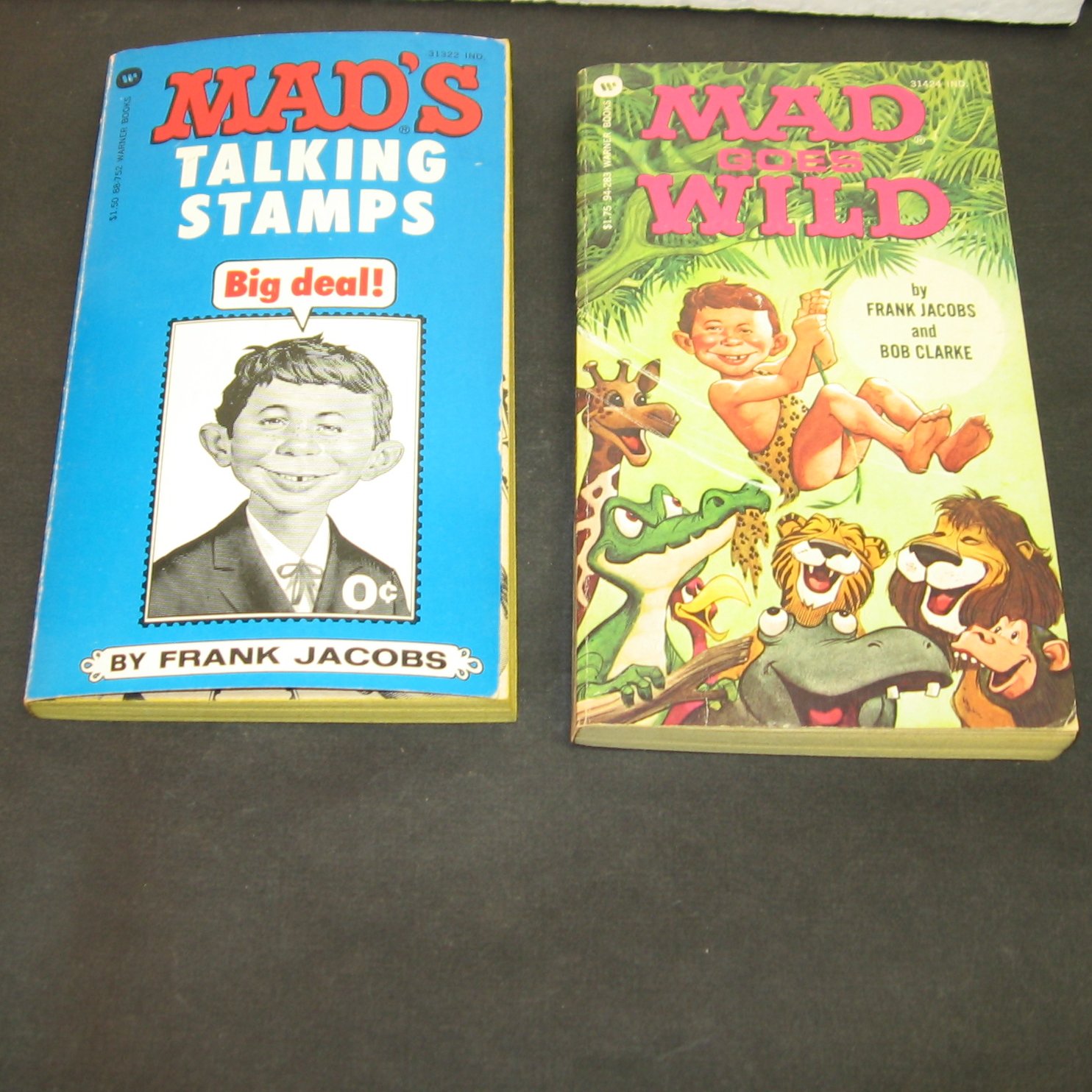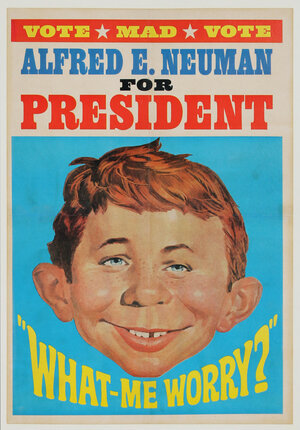
MAD became a runaway success and the second most successful magazine of the 1950s, second only to Hugh Hefner's Playboy magazine.
#Alfred newman mad magazine full#
Full page faux advertising appeared on the inside and rear covers mimicking ads found in upscale slick magazines. Spy," the fold-in on the back cover, "The Lighter Side," and MAD Libs were popular.
#Alfred newman mad magazine movie#
Recurring features like movie and television show parodies, "Spy vs. The new format allowed for larger, more complex illustrations, filmlike sequences, and expanded text.


By not accepting any advertising, the magazine was also freed from any conflicts of interest. MAD survived the comic book purges and protected its independence. They recreated their satiric comic book into a large format magazine in 1955 and avoided the CCA constraints which were limited specifically to comic books. MAD publisher William Gaines and editor Harvey Kurtzman were having none of it. Satire, free speech, and political dissent were endangered. Scenes of graphic violence, gore, sexual innuendo, and disrespect of police, government officials, politicians, celebrities, and respected institutions were banned. The CEOs ran scared and formed the self-governing Comic Code Authority ( CCA) and set up a series of standards before they would grant their Seal of Approval on a comic's front cover if it met the Authority's standards. The Comics Magazine Association of America was formed in 1954 by the comic book industry to avoid threatened government regulation, despite being a censorship First Amendment issue. The hysteria was based on the research of psychologist Fredric Wertham's best-selling book with the lurid title The Seduction of the Innocent, which purported that comic books contributed to "children's maladjustment." Comic books were banned and burned in some communities.

The format was changed in response to the United States Senate hearing to investigate the menace of comic books. MAD originally launched as a comic book in 1952 and became a magazine in 1955. Upon learning of the magazine's demise, Weird Al tweeted, "I can't begin to describe the impact MAD magazine had on me as a young kid." People like Robert Crumb, creator of Zap Comix, standup comedian Jerry Seinfeld, film critic Roger Ebert, and musical satirist Weird Al Yankovic all were influenced by MAD.


 0 kommentar(er)
0 kommentar(er)
